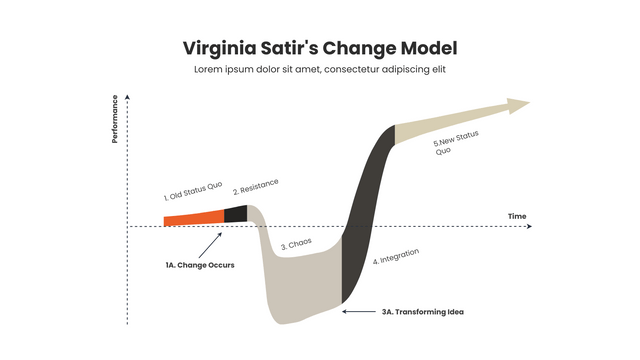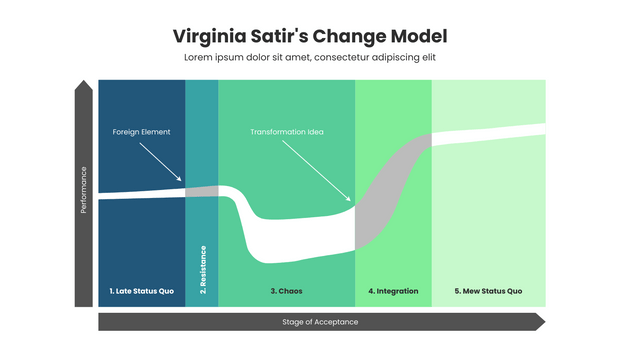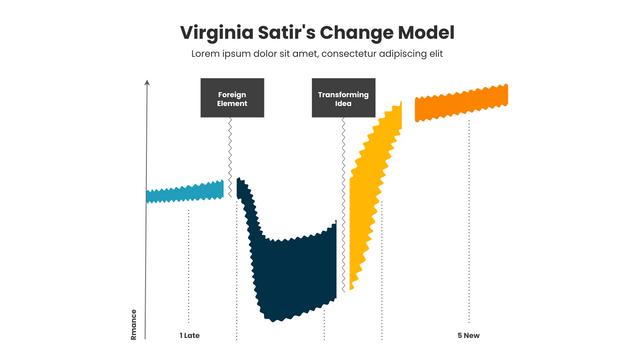What is the Virginia Satir Change Model?
Virginia Satir has developed a model that shows how people experience and respond to change. Its purpose is to help project team members understand how they feel so that they can implement change more effectively.
The Virginia Satir Change Model is a five-stage model of change. It describes the impact of each stage on people’s emotions, thoughts, performance, physiology, and more. Using the principles embodied in the model, you can improve your ability to understand how to deal with change and how to help others deal with it.

Edit this Virginia Satir Change Model template
1. Old Status Quo – Follow the rules. This initial stage is familiar with everything and everything can be categorized as “business as usual.” Business as usual” may work well for some people because they know what to expect. For others, it may feel trite or tiresome.
1A. Change Happens – External interruptions. Something happens during this period that changes the status quo. This may include starting a project that will completely change the way people usually work.
2. Resistance – When changes are introduced, there is usually a period when people are very resistant and their performance declines. People may ignore the changes or dismiss their relevance.
3. Chaos – Confusion. People are in unfamiliar territory. They are no longer comfortable and their performance drops to its lowest level. Their moods, actions and behaviors are also unpredictable. Some people may feel anxious, some may remain silent, and some may feel excited. Confusion can make people creative in trying to find a way to make sense of a situation. They will try various ideas and behaviors to see which ones lead to positive results.
3A. Change ideas – At this point, people need to come up with ideas that will help them make sense of the situation. They begin to discover how to find their way out of the chaos and cope with the new reality. Then, job performance begins to improve.
4. Integration – Integrate and practice. People try to implement new ideas or behaviors. There may be frustration and a period of trial and error, but eventually they learn what works and what doesn’t. This will improve performance. Performance is usually higher than it was before external factors came into play.
5. New Status Quo – Enter the new status quo. People get used to the new environment and their performance stabilizes. Eventually, the new status quo becomes the normal way of doing things.

Edit this Virginia Satir Change Model template


